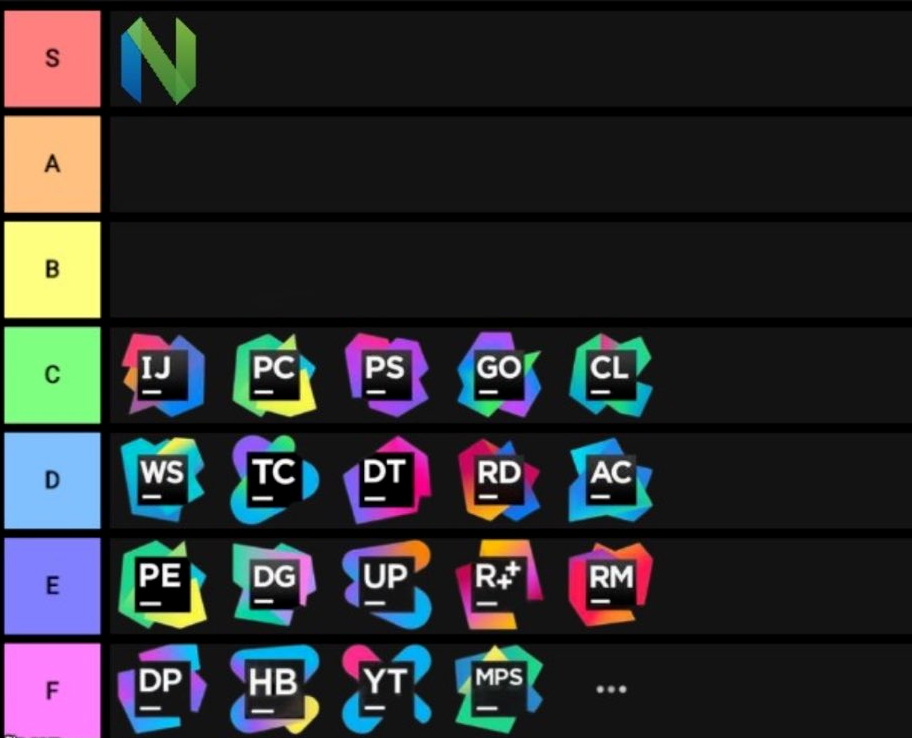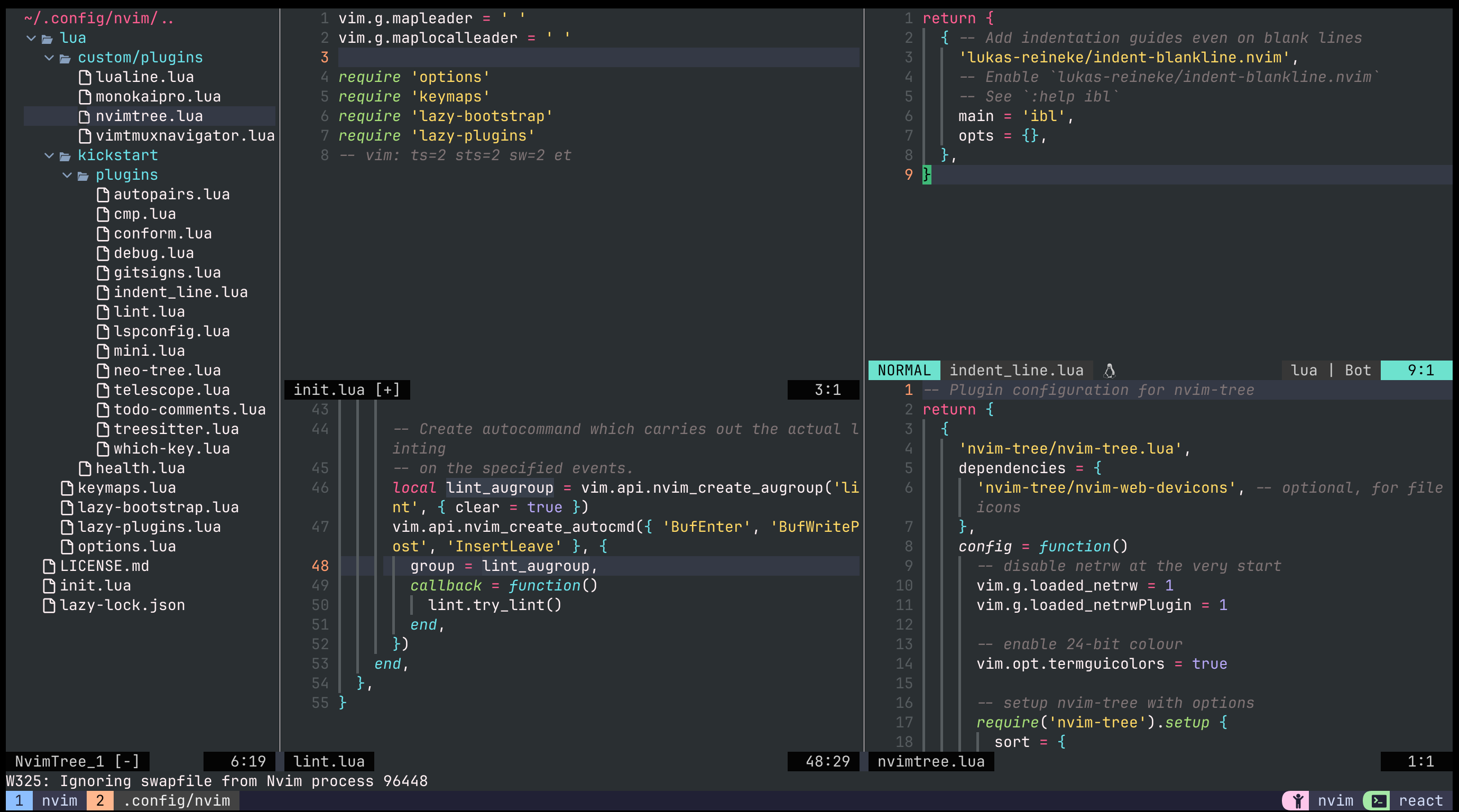NeoVim: A tool for the 10x engineer

A couple of months ago, NeoVim became a hot topic on programming X. People were forming something of a cult around it, convincing everyone that NeoVim is the best IDE out there, with only Emacs coming close.
During university, I used Vim frequently because most of the lab computers didn’t have a graphical interface. When I switched from Vim to IntelliJ, the experience felt incredible. Navigation was effortless, syntax highlighting was vibrant, and autocompletion worked like a charm. Little did I know that all these features were also achievable in Vim, but because I was just starting out, I didn’t invest the time to configure it myself.
So, encountering the NeoVim hype left me feeling conflicted. On one hand, I had frustrating memories of Vim’s steep learning curve; on the other, I couldn’t shake the curiosity that maybe NeoVim had transformed into something revolutionary. If this was truly a new paradigm in the programming world, I didn’t want to be left behind.
That’s why I set myself a small challenge: to fully replace my current IDE (PyCharm) with NeoVim. Once complete, I’ll have all the insights I need to take a stance on the NeoVim hype—either to embrace it or to stick with JetBrains or VS Code and move on.
The Initial Struggle: Adapting to NeoVim’s Learning Curve
Despite having some previous experience with Vim, I found that I had retained little more than the basics: the distinctions between edit and view modes, and the familiar hjkl navigation. Everything else? Fuzzy at best. So, getting comfortable in NeoVim felt like jumping into the deep end all over again.
To rebuild my foundation, I started with some practice in vimtutor and then watched a fantastic YouTube tutorial that made the basics much clearer and highlighted some advanced features of NeoVim (NeoVim Setup - Full Guide). These resources, combined with a brief dive into Lua (since NeoVim’s configuration now relies on it), laid the groundwork for me to start configuring my own setup.
But even with that preparation, NeoVim’s learning curve was intense. At the beginning, it felt like every small action required a quick Google search. How do I rename a file? What’s the proper way to switch buffers? And, for that matter, what exactly is a "buffer" in NeoVim, and why does it matter? Many of these basic operations involved terms and concepts that were new to me or that I only vaguely remembered from Vim.
To make things easier, I leaned on a popular NeoVim kickstart template (kickstart.nvim), which gave me a solid starting configuration and saved me from configuring everything from scratch. Still, diving into the template’s settings and tweaking things to fit my needs was overwhelming. Each piece of functionality I encountered seemed to open up a new rabbit hole—like peeling back layers on how buffers, tabs, and windows work within NeoVim. I took the time to understand that I could install packages in several ways, using multiple tools like Packer, vim-plug, and Lazy, among others.
Overall, the start was rocky, but this combination of tutorials, templates, and trial-and-error slowly started to bring me up to speed.
The Acceleration Phase: Finding My Flow
After about a week of stumbling through configurations and keyboard shortcuts, something clicked. My fingers started remembering commands without conscious thought, and I found myself navigating through codebases with increasing fluidity. What initially felt like wrestling with the editor transformed into an elegant dance of keystrokes. The moment I realized I hadn't touched my mouse for hours was particularly satisfying.
Not only did I match my previous PyCharm productivity, but I discovered a newfound joy in programming. There was something deeply satisfying about the way NeoVim responded to my commands—each keystroke felt purposeful and efficient. The modal editing started making perfect sense, and operations like changing function arguments or refactoring variable names became almost game-like in their execution.
Most surprisingly, I found myself slipping into "flow state" more easily than ever before. Without the visual clutter of traditional IDE toolbars and with my hands never leaving the home row, my focus remained unbroken. Complex coding tasks that once required constant context switching now felt like continuous, uninterrupted streams of thought.

I finally understood why NeoVim users were so passionate about their editor. It wasn't just about the speed or efficiency—it was about the entire philosophy of how we interact with our code. The initial investment in learning NeoVim wasn't just about mastering a new tool; it was about developing a new mindset toward programming itself. Like many before me, I couldn't help but want to share this revelation with others.
As I delved deeper into the NeoVim ecosystem, exploring custom plugins and sharing configurations with the community, I realized I had unknowingly joined the very "cult" I'd been skeptical of just weeks before. But now I understood—this wasn't blind devotion; it was genuine enthusiasm for a tool that had transformed my daily coding experience into something more engaging and enjoyable than I thought possible.
When Less Became More
One of the most surprising revelations of my NeoVim journey was realizing I no longer needed my external monitor. My 13-inch laptop screen, which I'd previously considered barely adequate for serious development, became more than sufficient. The magic lay in NeoVim's modal editing and efficient space utilization—every inch of screen real estate was dedicated to what mattered most: the code itself. No more cluttered toolbars or persistent file trees eating up precious space.
The mouse-free workflow transformed how I navigated large codebases. With just a few keystrokes, I could jump between files, search for symbols across the entire project, preview function definitions, and traverse through git changes—all without leaving the home row. This wasn't just about speed; it eliminated the awkward trackpad gymnastics that laptop work usually entails, making my coding sessions more ergonomic and enjoyable.
This newfound independence from large displays has had practical benefits beyond productivity. I found myself confidently coding from cramped airplane tray tables and busy cafés, knowing I could tackle any programming task with the same efficiency as if I were at my desk with a full setup. My development environment had become truly portable, without sacrificing any of the power I needed for professional work. In an unexpected way, embracing NeoVim hadn't just changed how I code—it had liberated me from the constraints of my physical workspace.
A Symphony of Plugins
After weeks of tweaking and experimenting, my NeoVim configuration evolved into a well-orchestrated system of plugins, each serving a specific purpose while maintaining impressive performance. The setup, built on the foundation of kickstart.nvim but heavily customized, is organized into clean, modular components.
At its core, the configuration utilizes Lazy.nvim for efficient plugin management, loading plugins only when needed. Treesitter provides the intelligent syntax highlighting and code understanding that makes navigation feel natural. LSP config handles all the IDE-like features—code completion, diagnostics, and go-to-definition functionality—while nvim-cmp delivers the smooth autocompletion experience I was accustomed to in PyCharm.
For project navigation, I rely on Telescope for fuzzy finding and Neo-tree for file browsing, though the latter stays hidden until summoned with a quick keystroke. The Vim-tmux-navigator ensures seamless movement between NeoVim splits and tmux panes, making my terminal-based workflow feel unified. Gitsigns keeps me informed of code changes right in the buffer, while Todo-comments helps track important code annotations.
The visual polish comes from the Monokai Pro theme and Lualine for the status bar, with Indent-line providing subtle indicators of code structure. Conform and Lint handle code formatting and real-time error checking, while Mini.nvim provides several quality-of-life improvements like automatic bracket pairs and surround functionality. Everything is tied together with Which-key, offering contextual command suggestions that made learning this setup much more intuitive.
The best part? Despite this rich feature set, the entire environment starts up in milliseconds and runs smoothly even on my modest remote hardware. It's a testament to NeoVim's efficiency that such a comprehensive development environment can be both powerful and lightweight.

One repo to rule them all
One of the most liberating aspects of my NeoVim journey has been distilling my entire development environment into a single, version-controlled configuration repository. With just a quick git clone of my dotfiles, I can recreate my exact coding environment on any machine in minutes. No more tedious PyCharm configuration syncs or wrestling with IDE settings across devices.
My carefully crafted NeoVim setup lives in a GitHub repository, making it not only portable but also continuously evolving. When I discover a new optimization or add a useful keybinding, I can commit the change and pull it down to all my devices. This has transformed my approach to using different machines—whether I'm on my work laptop, personal computer, or even SSH'd into a remote server, my familiar development environment follows me everywhere.
The contrast with my previous IDE setup is stark. Gone are the days of spending hours configuring PyCharm on each new device, waiting for settings to sync, or dealing with inconsistencies between installations. Now, my entire development environment, from key mappings to LSP configurations, lives in a few kilobytes of text files. It's not just a configuration—it's a curated, personalized, and infinitely portable development experience that I can summon anywhere with a few terminal commands.
Summary
After months of using NeoVim as my primary development environment, I can confidently say it has transformed not just how I code, but how I interact with my computer entirely. What started as a curiosity about the NeoVim hype has evolved into a genuine appreciation for why some developers seem to operate at an entirely different speed. Whether I'm writing Python, TypeScript, or Rust, NeoVim handles everything with the same level of intelligence and speed I once thought only possible in language-specific IDEs.
The ecosystem is incredibly rich—thousands of plugins, each adding powerful capabilities while maintaining NeoVim's legendary performance. But what truly sets it apart is how it follows you everywhere. My entire development environment lives in a single GitHub repository, meaning I can recreate my exact setup on any machine in minutes. No more wrestling with different IDE configurations across devices—it's the same familiar, efficient experience whether I'm on my work laptop, personal machine, or a remote server.
The community's passion for NeoVim isn't just hype—it's born from the real experience of feeling truly in control of your development environment. Every keystroke feels purposeful, every command logical, and every operation lightning-fast. When people talk about "10x engineers," they're often referring to developers who have mastered their tools to the point where technology amplifies their capabilities rather than constraining them. That's exactly what NeoVim offers.
If you're on the fence about trying NeoVim, I encourage you to take the plunge. Yes, there's a learning curve, but the payoff is immense. Start with a popular configuration like kickstart.nvim, watch a few tutorials, and give yourself time to adjust. Before you know it, you might find yourself writing a similar post, wondering how you ever coded any other way.
If you liked it, don't forget to subscribe!
Member discussion